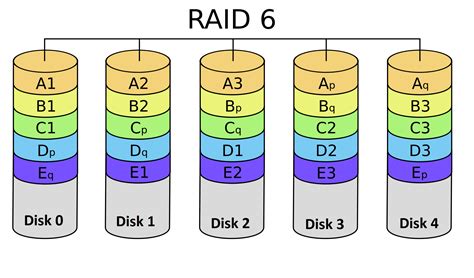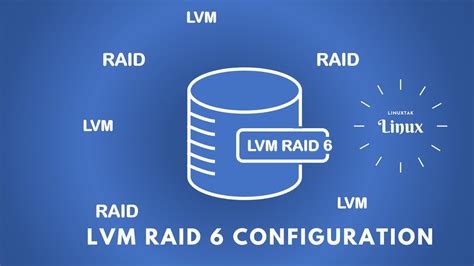lv raid map | lvm raid size lv raid map To create a RAID logical volume, you can specify a RAID type by using the --type argument of the lvcreate command. For most users, specifying one of the five available primary types, which . $384.00
0 · raid 6 linux
1 · lvm raid size
2 · lvm raid refresh needed
3 · lvm raid missing devices
4 · lvm raid 5
5 · logical volume in raid
6 · linux raid lvm
7 · dm lvm raid
Men's McQueen Graffiti Hooded Sweatshirt in Black/khaki. Black loopback jersey hooded sweatshirt with a screen printed McQueen Graffiti logo. The sweatshirt has a front kangaroo pocket and a drawstring hood. Finished with ribbed cuffs and hem. View details. Color. Shipping information.
Join now. Unlock exclusive posts and join a growing community. Starting at. .95. /month. Join now. creating maps for the LV PoGo community!Create a RAID LV To create a RAID LV, use lvcreate and specify an LV type. The LV type corresponds to a RAID level. The basic RAID levels that can be used are: raid0, raid1, raid4, .To create a RAID logical volume, you can specify a RAID type by using the --type argument of the lvcreate command. For most users, specifying one of the five available primary types, which .The basic RAID levels that can be used are: raid0, raid1, raid4, raid5, raid6, raid10. lvcreate --type RaidLevel [OPTIONS] --name Name--size Size VG [PVs] To display the LV type of an existing .
raid 6 linux
lvm raid size
LVM supports RAID takeover, which means converting a RAID logical volume from one RAID level to another, for example, from RAID 5 to RAID 6. You can change the RAID level to . In this guide, we’ll explore the methods applied to create a software LVM RAID in Linux. Also, we will show you a simple solution to recover any data lost from an LV RAID 5 .First, you need a physical volume. Typically you start with a hard disk, and create a regular partition whose type is “LVM” on it. You can create it with gparted or fdisk, and usually only .
Change Map Location. Start at my Location. Save Last Loc. Follow my Loc. Spawn Area . Keep Map Centered . Favorites. IV Favs. Level Favs. Min Raid Level Favs. Notify with Sound. Use .
This article will provide an example of how to install and configure Arch Linux with Logical Volume Manager (LVM) on top of a software RAID. Tip: LVM itself supports logical volumes in RAID .Join now. Unlock exclusive posts and join a growing community. Starting at. .95. /month. Join now. creating maps for the LV PoGo community!Create a RAID LV To create a RAID LV, use lvcreate and specify an LV type. The LV type corresponds to a RAID level. The basic RAID levels that can be used are: raid0, raid1, raid4, raid5, raid6, raid10.
best replica watch rolex
lvm raid refresh needed

best rolex replica luxury watches
To create a RAID logical volume, you can specify a RAID type by using the --type argument of the lvcreate command. For most users, specifying one of the five available primary types, which are raid1, raid4, raid5, raid6, and raid10, should be sufficient. The following table describes the possible RAID segment types. In this tutorial we explore lvdisplay command which is used to display the logical volume status and many other details such as name, UUID, status, size etc.The basic RAID levels that can be used are: raid0, raid1, raid4, raid5, raid6, raid10. lvcreate --type RaidLevel [OPTIONS] --name Name--size Size VG [PVs] To display the LV type of an existing LV, run: lvs -o name,segtype LV (The LV type is also referred to as "segment type" or "segtype".)LVM supports RAID takeover, which means converting a RAID logical volume from one RAID level to another, for example, from RAID 5 to RAID 6. You can change the RAID level to increase or decrease resilience to device failures.
In this guide, we’ll explore the methods applied to create a software LVM RAID in Linux. Also, we will show you a simple solution to recover any data lost from an LV RAID 5 system as a result of accidental removal or unexpected drive failure.
First, you need a physical volume. Typically you start with a hard disk, and create a regular partition whose type is “LVM” on it. You can create it with gparted or fdisk, and usually only want one LVM-type partition in the whole disk, since LVM will handle subdividing it into logical volumes.Change Map Location. Start at my Location. Save Last Loc. Follow my Loc. Spawn Area . Keep Map Centered . Favorites. IV Favs. Level Favs. Min Raid Level Favs. Notify with Sound. Use Pokemon Cries. Jumping Favs. Push Notifications (Desktop) Style. Darkmode . Map Style. Navigation via: Icon Size Fav Iconsize Modifier. Location Style. Overlay .This article will provide an example of how to install and configure Arch Linux with Logical Volume Manager (LVM) on top of a software RAID. Tip: LVM itself supports logical volumes in RAID configurations. See LVM#RAID for an alternative to this article.
Join now. Unlock exclusive posts and join a growing community. Starting at. .95. /month. Join now. creating maps for the LV PoGo community!Create a RAID LV To create a RAID LV, use lvcreate and specify an LV type. The LV type corresponds to a RAID level. The basic RAID levels that can be used are: raid0, raid1, raid4, raid5, raid6, raid10.To create a RAID logical volume, you can specify a RAID type by using the --type argument of the lvcreate command. For most users, specifying one of the five available primary types, which are raid1, raid4, raid5, raid6, and raid10, should be sufficient. The following table describes the possible RAID segment types.
lvm raid missing devices
In this tutorial we explore lvdisplay command which is used to display the logical volume status and many other details such as name, UUID, status, size etc.
The basic RAID levels that can be used are: raid0, raid1, raid4, raid5, raid6, raid10. lvcreate --type RaidLevel [OPTIONS] --name Name--size Size VG [PVs] To display the LV type of an existing LV, run: lvs -o name,segtype LV (The LV type is also referred to as "segment type" or "segtype".)
LVM supports RAID takeover, which means converting a RAID logical volume from one RAID level to another, for example, from RAID 5 to RAID 6. You can change the RAID level to increase or decrease resilience to device failures.
In this guide, we’ll explore the methods applied to create a software LVM RAID in Linux. Also, we will show you a simple solution to recover any data lost from an LV RAID 5 system as a result of accidental removal or unexpected drive failure.First, you need a physical volume. Typically you start with a hard disk, and create a regular partition whose type is “LVM” on it. You can create it with gparted or fdisk, and usually only want one LVM-type partition in the whole disk, since LVM will handle subdividing it into logical volumes.Change Map Location. Start at my Location. Save Last Loc. Follow my Loc. Spawn Area . Keep Map Centered . Favorites. IV Favs. Level Favs. Min Raid Level Favs. Notify with Sound. Use Pokemon Cries. Jumping Favs. Push Notifications (Desktop) Style. Darkmode . Map Style. Navigation via: Icon Size Fav Iconsize Modifier. Location Style. Overlay .
rolex expolrer 2

Wombats, bandicoots and possums you may have heard of, but have you met a .
lv raid map|lvm raid size



























